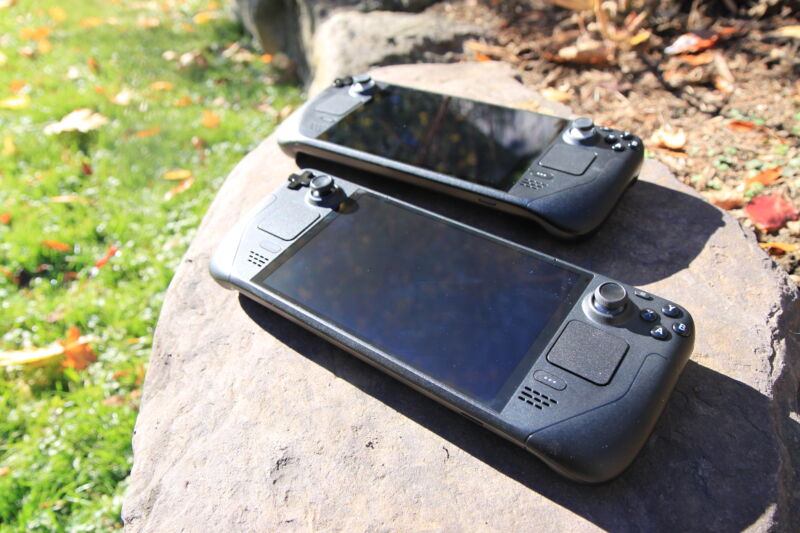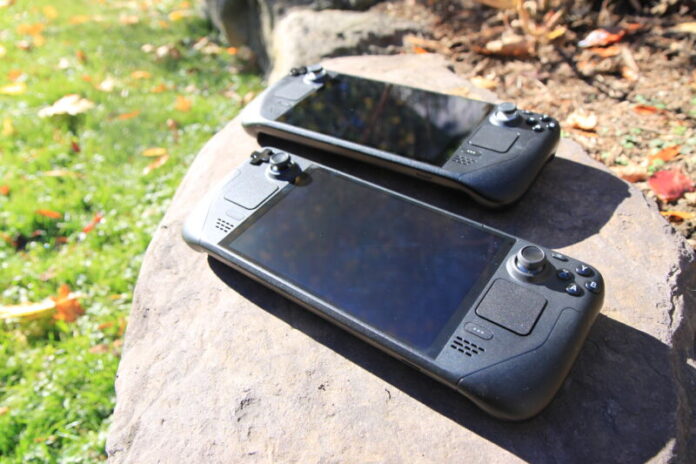
Enlarge / The Steam Deck OLED (bottom) sunbathing with its older brother. (credit: Kyle Orland)
In our review of the Steam Deck OLED last week, we noted that the upgraded 90 Hz screen "has a pretty direct impact on how it feels to play reflex-heavy games." Now, Digital Foundry has used input lag-testing hardware to quantify the precise size of that amorphous feeling, which it found is significant even in games running at 60 fps and below.
Digital Foundry's testing used Nvidia's Latency and Display Analysis Tools running on two reflex-heavy games: Doom Eternal and Crysis 3 Remastered. The tool measures the total time between a mouse click and the flash of an on-screen muzzle that indicates a shot being fired—the lower, the better for the game's responsiveness.
Unsurprisingly, the best improvements in input lag were measured when the Steam Deck OLED was running at a full 90 fps. Compared to the 60 fps LCD Steam Deck, input lag was reduced by an average of 26.1 ms for Doom Eternal and 32.5 ms for Crysis 3. While some of that reduction can be attributed to the shorter time between frame refreshes on the OLED (11.11 ms on the OLED at 90 fps versus 16.66 ms on the LCD at 60 fps), the size of the reduction here amounts to multiple 90 fps frames.
Read 4 remaining paragraphs | Comments
Ars Technica - All contentContinue reading/original-link]




